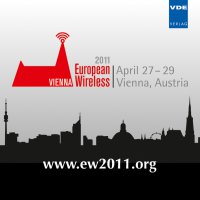Area Energy Consumption in Cooperative Decode and Forward (DF) Relaying Scenarios
Conference: European Wireless 2011 - Sustainable Wireless Technologies
04/27/2011 - 04/29/2011 at Vienna, Austria
Proceedings: European Wireless 2011
Pages: 8Language: englishTyp: PDF
Personal VDE Members are entitled to a 10% discount on this title
Authors:
Ahsin, Tafzeel ur Rehman; Slimane, Slimane Ben (Department of Communication Systems (CoS), ICT, The Royal Institute of Technology (KTH), Stockholm, Sweden)
Abstract:
Energy efficiency in cellular networks has become an important design parameter in recent research works due to the global climate change and growing demand for very high data rates in future cellular systems. In our work, the main objective is to reduce the area energy consumption in a cellular network, for a given average spectral efficiency, in order to realize the green radio transmissions. The energy consumption for different transmission schemes such as direct link, decode and forward (DF) relaying with and without network coding is compared in this regard using a linear power consumption model. The impact of different parameters such as cell radius, the number and position of deployed relays and target spectral efficiency is studied for each transmission scheme. It has been concluded that DF relaying in general, provides moderate power savings as compared to the direct link transmission. Moreover, for a given outage probability, the network coding at the relay extends the cell coverage and provides higher spectral efficiency as compared to the conventional DF relaying and the direct transmission.


